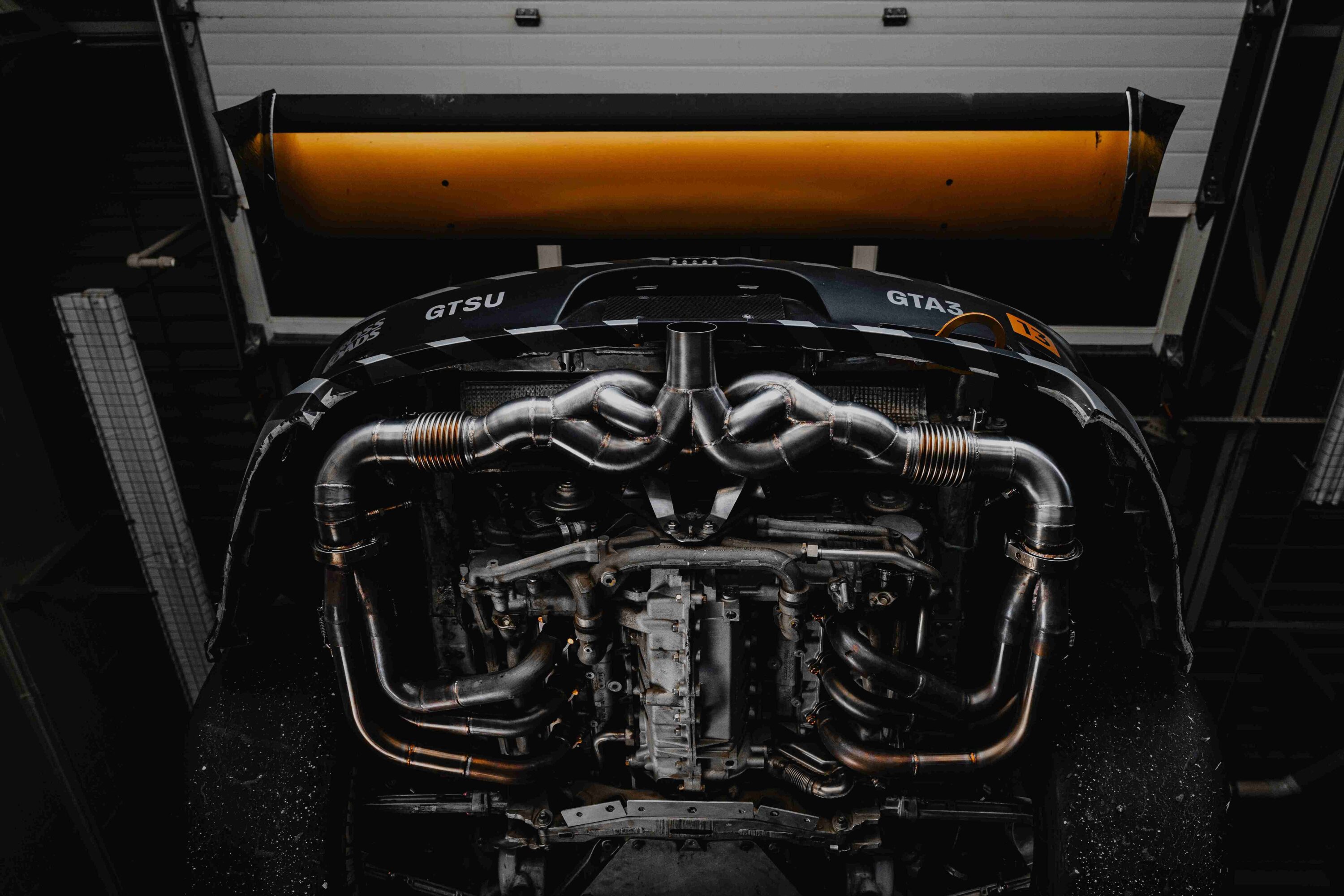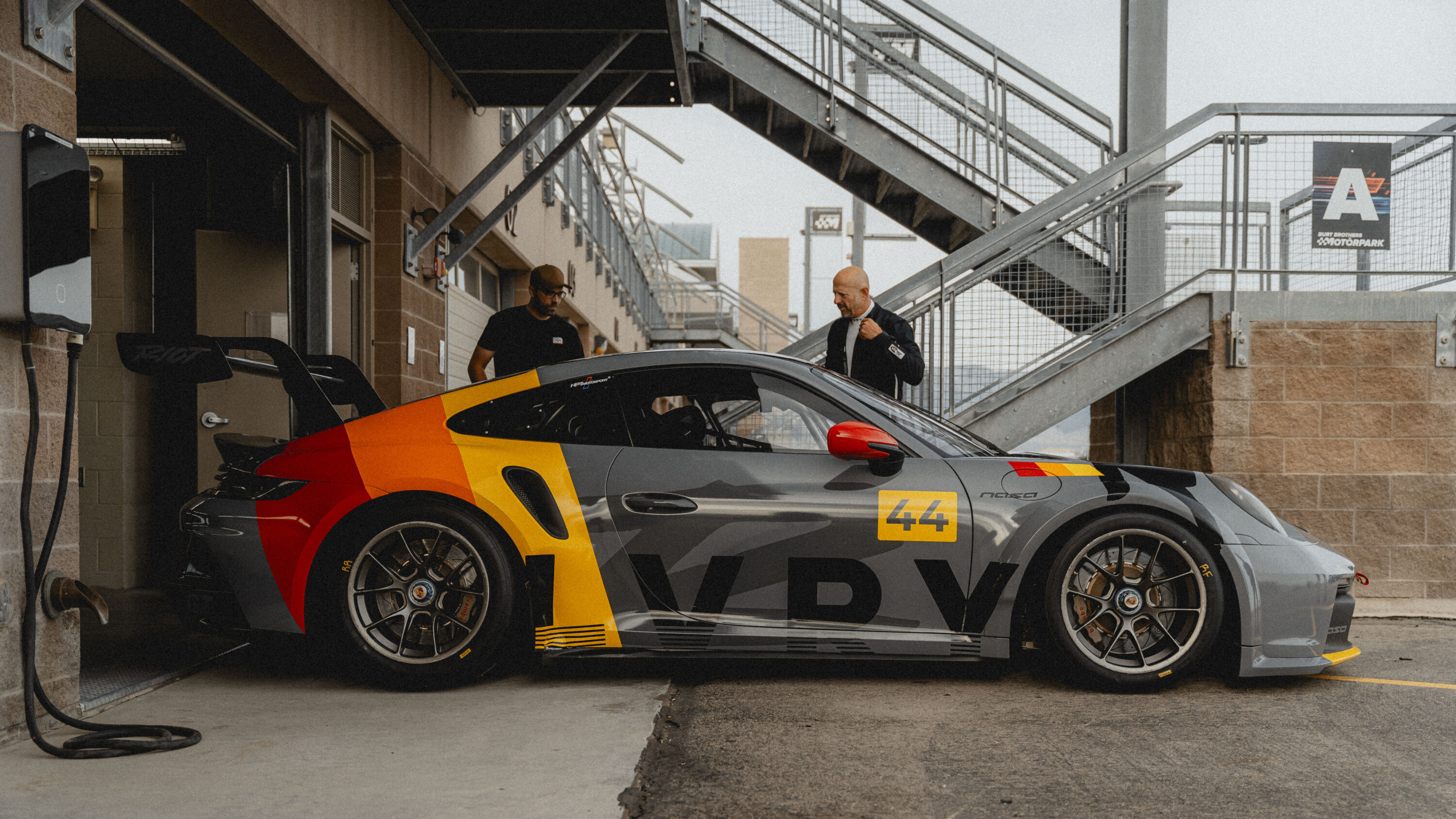Once you have a few track days under your belt (or stickers on your windshield, more accurately), you’re likely to be driving solo. Even if you’re not, at this point you should be comfortable enough to start putting some intentionality behind each venture on-track. Otherwise, you’re likely to fall into a rut where you just go out, do some laps, come in, and wonder:
Am I getting any faster?
Well fortunately, there is a simple protocol you can put into practice that will make you faster — it is this:
- Set one to two goals each session
- Take notes on how your session went
- Know your cold and hot tire pressures, observe tire wear
- Be consistent with how you prepare for each session
Let’s break it down.
Set one to two goals each session
Why only a maximum of two? Simple: focusing on more than one or two things becomes counter-productive. It takes a lot of mental concentration to drive on the track as it is. Choosing one or two specific things to focus on throughout your session will add to that mental strain because those one or two things are new or, at the very least, something you’re not automatically doing.
You can spend a whole day working on the same one or two things, or you can move on from those things throughout the day, but those things don’t need to be complicated. In fact they should be simple, short prompts that you repeat to yourself on grid and during your session.
Here are some examples:
- Check mirrors, check gauges.
You should do this at least once each lap as you come onto the longest straightaway. Over time, you’ll add this prompt to another straightaway (at least the ‘check mirrors’ portion). This will keep you from building a huge line of drivers behind you who are waiting for the point-by and may very well save your car. - Brake at the ______
When working on a corner, picking a specific braking marker is often a challenge for drivers. Pick one that is conservative and be consistent. You can reflect on it during the session and consider: “is it too early?”, “should I brake softer or harder”, “can I begin trail-braking?”. By being consistent on where you are braking, you can become aware of how well it is working and how hard you have to brake. This is how you build consistency, which is the basis of beginning improvement. - BIG Brakes
This is a cue I use with drivers who are braking too softly, either in a single corner or everywhere, because they’re still driving like they’re on the street (where we brake softly to begin with). On the track, you must build to your maximum brake pressure early in the braking zone — this is how you are able to brake later, stabilize the car, and begin working on trailing off the brakes as you turn-in. - String Theory
The prompt is short, the concept is powerful. Imagine there are two strings tied to the bottom of your steering wheel. Those strings are tied to the gas and brake pedals (one each). When your steering wheel is turned to a large degree, you can’t even press either pedal down, but as soon as you begin to straighten the wheel, you can start adding some gas. Reverse that for brakes: as soon as you begin easing off the brakes, you can start steering the wheel again.
There are many others you can use — some will be specific to certain corners or portions of the track, whereas others can be broadly-applied. The point is to focus your attention on a few things to change and improve upon, because otherwise you’re either trying to change too much or just doing laps.
Take Notes on How Your Session Went
This is another simple but impactful habit you should form, and you should definitely start with pen/paper or a notes app on your phone (think simple).
Regardless of your method of taking notes, the point is to take some dedicated time — even just five minutes — to reflect on your driving. By reflecting on how you progressed towards your goals for the session or what you did in a certain situation, you can think through what is working, what is not, and what you will adjust for the next session.
Not sure what to write? Here are some ideas.
Prompts for taking notes after your session:
- Did I progress towards my session goal(s)? What worked and didn’t work as I tried to achieve those goals? What will I repeat or change for next session?
- How did the car feel? Did it tend to oversteer or understeer or was it neutral? Do I like how the car behaves or should I try a setup adjustment (tire pressure, sway bar setting, etc)?
- Was I able to “unwind” (straighten) the steering wheel and dial-up the throttle right after every apex? Which corners are more difficult? Which corners feel great?
- What was something that surprised me during that session? What can I do to anticipate or be ready for that situation in the future?
- Was I checking my mirrors on every straightaway? Was I checking my gauges on the main straightaway? How are temps and pressures?
As you can imagine, there are countless things you could ask yourself at the end of a session, but none of them are “what can I do to go faster?”. Though that is the ultimate question, peeling back that question will result in questions that actually allow you to examine your driving and the car, not just take a wild guess or “try harder”.
Know Your Cold & Hot Tire Pressures; Observe Tire Wear
Your tires can tell you a lot and their pressures are the most-easily adjusted setup variable of the car (for most cars). The great thing about observing and adjusting pressures to play with the car’s handling characteristics and manage tire life is the cheapest adjustment you can make that will likely also save you money. If you can get your tires to wear fairly-evenly, or proactively rotate and/or flip the tires on the wheels before they wear too much, you’ll get more sessions on the same set of hoops!
When you first start out, you’ll probably do something like bleed off pressure as the day goes on, keeping the tires below 40psi, but do you really know if that’s the right pressure to aim for? Unless you can reference another driver who is running the same car, same tires, same setup, and drives similarly… you are guessing! That’s ok, though, because you have to start somewhere.
Here’s what to do to take it to the next level:
- Find the tire manufacturer’s data sheet on the tire. What do they recommend as a ‘hot pressure’? What do they state is the maximum safe running pressure? All R-Compound tires have this information published and most high-performance street tires will share this information as a guide.
- Start with your ‘hot pressures’. Determine this by observing tire wear and paying attention to understeer/oversteer.
- Take your tire pressures as soon as you come off the track — preferably right in the hot pit. Write those down. Then reflect (see previous session).
- If the centers of the tires are wearing or grip greatly degrades after a few laps, your tire pressures are too high. Try dropping the tires 1–2 PSI for your next session.
- If both edges wear excessively or performance is greatest at the very end of a session, you’re probably setting them too low — but this is rare. Bump them up 1–2 PSI.
- Once you get your ‘hot pressures’ dialed-in, let the tires cool to ambient temperature. Those are now your ‘cold pressures’ — ish. There is a whole other ball of wax, here, but just keep in mind that your aim is to get to optimum hot pressure during your session and maintain that pressure for as long as possible.
There are a ton of variables that go into fine-tuning things beyond this point: adjusting for colder/hotter days, alignment adjustment (most cars need more negative camber), driving style, track configuration, etc. Entire books have been written about this topic!
That all said — if you get consistent, then you can make single changes and observe results, then change again. Over time, you’ll get into a ‘groove’ where your pressures are stable. Then you’ll make a leap in progression, a car setup change, or tire compound change, and you’ll need to adjust.
Be Consistent on How You Prepare for Each Session
Ever hear the saying “practice makes perfect”? Well, it’s kind of bad advice. It should be: “perfect practice makes perfect”. A foundational piece of perfect practice is optimizing how you prepare to drive. Professional athletes do this to get “in the zone” — and so should you.
What this means for motorsports is:
- Do your pre-session car checks in the same order.
Setting tire pressures, checking torque, checking oil, fueling, etc. It all takes just a minute, but if you alter the order then you can easily miss a step or even just a single wheel when torquing all four if you don’t do it in the same order. Your fuel check may be right after you get off-track if you need to drive to the pump, but whatever you need to do to be “ready” for next session — do it the same way every time. - Put your gear on in the same order, every time.
What order to you buckle up in? Should you put on your helmet before or after you get in the car? When do you put on your gloves?
The exact order doesn’t matter, so pick the one that is optimal for you. That way, you don’t forget anything (like buckling your HANS device!) or leave something loose in the cabin. - Set your gear down in the same place so you never lose it.
I’m talking helmet, gloves, earplugs, balaclava, shoes, your detachable steering wheel — all of it. Save yourself the stress of pawing around for that second glove because you set it on the center console and knocked it into the footwell. - Get to grid early.
This is also preferential — be it five minutes or ten, but this will determine when you need to start getting ready and, by consistently getting ready early enough, you’ll budget the rest of your “down time” appropriately. If you get consistent with the things above, you’ll know that from the time you start getting ready to when you can be rolling to grid takes you X-minutes and covers all of your bases.
In Conclusion
So none of these are secrets, right? Hopefully they got you thinking of a few simple things you can improve on, though, because this is the stuff that the pros do every time they drive.
By structuring your days a little more, you’ll find better results and more improvement during the times when you don’t have a right-seater shouting instructions on how to improve during your session. Moreover, you’ll be able to maximize the times when you do have a right-seater — take notes on their recommendations, execute, reflect, repeat.
This should ultimately result in a more fun day at the track because you’ll have fewer pre-session scrambles, won’t forget things as often, and should see some incremental improvement and get more bang for your buck.






